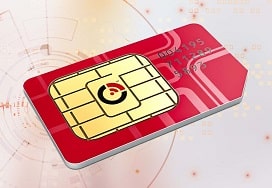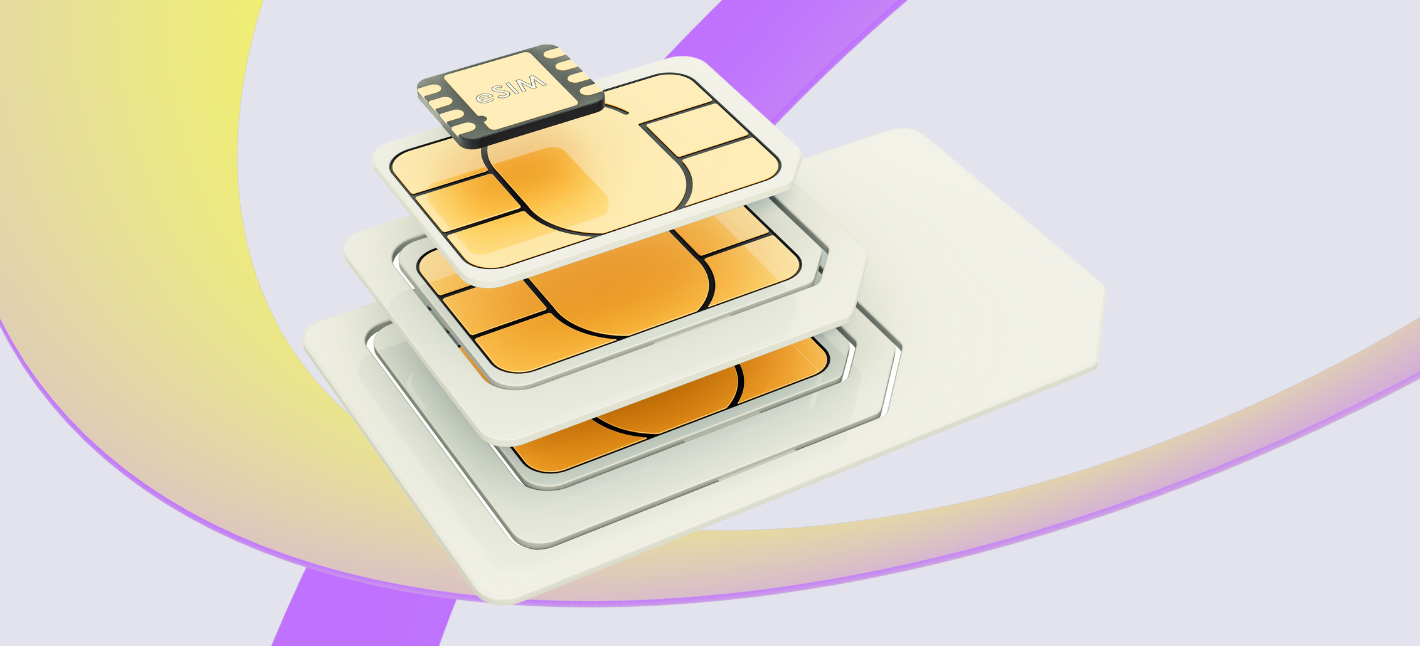Hologram Iot Sim Card SIM Providers LTE-M/Nb-IoT Roaming Setup
The landscape of the Internet of Things (IoT) is marked by a mess of connectivity standards and protocols designed to facilitate communication between units, applications, and services - 2g Iot Sim Card. Each standard addresses particular wants and situations, making it essential to check these protocols primarily based on factors like scalability, vary, energy consumption, and utility suitability.

IoT connectivity standards embody a extensive array of technologies, including Bluetooth, Zigbee, MQTT, CoAP, LoRaWAN, and cellular protocols similar to LTE and 5G. Understanding the strengths and weaknesses of those standards can guide companies and builders in selecting the proper resolution for his or her functions, finally impacting the efficiency and effectiveness of their IoT ecosystems.
Bluetooth is a widely adopted standard identified for its short-range connectivity. Bluetooth Low Energy (BLE) provides decrease power consumption, making it appropriate for battery-operated units. This protocol is especially efficient for consumer IoT functions, similar to fitness trackers and smart residence devices. However, its restricted vary can be a important drawback for functions that require long-distance communication.
Iot Board With Sim Card Built For Bigger Internet of Things SIM Cards
Zigbee, one other well-liked IoT protocol, is well-suited for mesh networking. This permits devices to speak over greater distances by relaying information between nodes. It operates on low power and is usually used in smart lighting and home automation methods. Zigbee's energy lies in its ability to support numerous gadgets within a network, making it ideal for smart building applications.
On the other hand, MQTT (Message Queuing Telemetry Transport) is a light-weight messaging protocol designed particularly for low-bandwidth and high-latency networks. It excels in situations where real-time communication is crucial, such as in remote sensor networks or machine-to-machine (M2M) communication. MQTT is designed for efficient message delivery, making it a top choice for IoT purposes that require instant knowledge transmission.
Sim Card Iot Unlimited IoT SIM Card 12 Month Prepaid Service

CoAP (Constrained Application Protocol) is one other messaging protocol tailor-made for constrained gadgets on lossy networks. It is commonly used in purposes with strict necessities regarding power utilization and data overhead. CoAP operates over UDP, which enables low-latency communication, making it best for real-time data transfer in smart metropolis applications and industrial automation.
LoRaWAN (Long Range Wide Area Network) serves a different objective, focusing on low-power, long-range communication. Iot Global Sim Card. It is especially efficient for IoT purposes that must cowl massive geographic areas, similar to agricultural sensors or city-wide monitoring methods. LoRaWAN networks can assist thousands of devices, providing scalability that many other protocols might lack.
Cellular networks, particularly LTE and 5G, present a sturdy connectivity possibility for IoT gadgets requiring excessive bandwidth and low latency. 5G is designed for large IoT implementations with low latency, enabling real-time communication for applications such as autonomous automobiles and smart healthcare. However, the value of cellular connectivity can be prohibitive for smaller projects, making it essential to gauge the budget alongside technical necessities.
Nb Iot Sim Card eSIM 101 Introduction eSIM IoT

Security is another important consideration in the comparison of IoT connectivity standards. Each protocol has its own method to data encryption and system authentication. MQTT, for instance, can benefit from SSL/TLS encryption, while CoAP provides Datagram Transport Layer Security (DTLS). Ensuring strong safety measures you could check here is important, significantly in eventualities involving delicate knowledge, corresponding to health monitoring.
Interoperability is a major problem within the IoT domain, as myriad devices and platforms often utilize different protocols. Ensuring compatibility between various systems can complicate implementation. Some standards, such as Zigbee and MQTT, provide bridges or gateways that facilitate interoperability with different protocols, enabling more seamless integration within an IoT ecosystem.
Latency and bandwidth requirements vary greatly among completely different purposes. Low-bandwidth, high-latency functions like smart agriculture might find success with LoRaWAN, while real-time applications corresponding to video surveillance could necessitate high-speed connectivity provided by 5G. The selection of connectivity protocol should align with the specific necessities of the application in query to foster optimum efficiency.
Iot Sim Card Pricing Secure IoT SIM
Environmental factors also play a role in figuring out probably the most appropriate connectivity standard. Urban environments might present challenges for protocols like LoRaWAN due to obstruction and interference, while BLE could wrestle with distance in large-area deployments. Understanding the physical environment in which the gadgets will operate is critical for guaranteeing reliable connectivity.
Deployment eventualities, whether or not they involve city, rural, or industrial settings, significantly affect the selection of connectivity standards. Industrial environments typically necessitate protocols that may handle high-bandwidth data streams, while smart house functions might prioritize low-power options. Different settings will dictate the parameters of the IoT deployment, necessitating a tailored method.
In conclusion, the comparison of IoT connectivity standards and protocols reveals a various array of choices, each with its distinct benefits and trade-offs. Understanding the precise wants of an software, together with distance, energy consumption, and information transmission requirements, is important in choosing the most applicable standard. The trends within the evolving panorama highlight the importance of seamless communication, robust security, and interoperability to create cohesive and environment friendly IoT ecosystems. As technology continues to advance, the necessity for adaptable and scalable solutions turns into much more pronounced, guiding future developments in IoT connectivity.
- Various IoT connectivity standards, corresponding to Zigbee, Z-Wave, and LoRaWAN, cater to completely different software needs, with Zigbee specializing in short-range low-power communication and LoRaWAN emphasizing long-range capabilities.
Cheapest Iot Sim Card IoT SIM Card eSIM Global Connectivity
- Bluetooth Low Energy (BLE) is optimal for functions requiring quick system pairing and minimal power consumption, making it suitable for wearables and short-range smart home gadgets.
- Cellular IoT standards like NB-IoT and LTE-M are tailor-made for gadgets demanding wider protection with network reliability, ideal for agricultural and transportation sectors.
- MQTT and CoAP are outstanding application layer protocols for IoT, where MQTT excels in lightweight message transport whereas CoAP is designed for constrained environments with lower overhead.
- Security stays an important differentiator among protocols; for instance, Zigbee employs AES encryption, while standards like LoRaWAN use end-to-end encryption to protect knowledge integrity.
Iot Sim Card Pricing IoT SIM Card Global M2M Connectivity
- Some connectivity standards prioritize scalability; as an example, Thread supports mesh networking, allowing a number of units to communicate and not using a central hub, enhancing community resiliency.
- The energy consumption profiles of protocols can vary: LoRaWAN is highly energy-efficient for low-frequency updates, while protocols like Wi-Fi require more substantial energy, making them much less suitable for battery-operated devices.
- Different protocols could supply varying degrees of interoperability; standards like AllSeen Alliance purpose to create a unified ecosystem, while others would possibly require particular gateways or bridges for cross-standard communication.
Cheap Iot Sim Card SIM Card IoT Projects Global Deployments
- The alternative of protocol usually depends on environmental considerations, with standards like Zigbee performing well in indoor settings due to its robust anti-interference capabilities in comparability with others like LoRaWAN, which is best suited to rural purposes.
What are the principle IoT connectivity standards?
The main IoT connectivity standards embody MQTT, CoAP, HTTP, LoRaWAN, Zigbee, and NB-IoT. Each standard serves specific use cases, with varying levels of efficiency, energy consumption, and vary, catering to various IoT applications.
Cheap Iot Sim Card Prepaid 4G SIM Card Data
How do I choose the right protocol for my IoT application?
Selecting the appropriate IoT protocol is decided by factors like data volume, power consumption, latency necessities, and network topology. Analyzing these aspects alongside the particular operational environment will information you in the path of the best option.
What are the variations between LPWAN and traditional wi-fi protocols?
Global Nb-Iot Sim Card Multi-Network M2M SIM global Internet Things
LPWAN (Low Power Wide Area Network) protocols, like LoRaWAN and NB-IoT, give consideration to long-range communication with navigate to these guys low energy consumption, making them ideal for battery-operated devices. In contrast, conventional wi-fi protocols like Wi-Fi and cellular supply higher bandwidth and faster connectivity, however they eat more energy and have shorter ranges.
Is security a major concern in IoT connectivity standards?
Yes, security is paramount in IoT connectivity. Protocols like MQTT and CoAP incorporate safety features like authentication and encryption. It's essential to grasp these features when choosing a protocol to make sure information safety and device integrity.
Buy Iot Sim Card About IoT SIM Cards
Can a quantity of protocols be utilized in a single IoT deployment?
Absolutely. Many IoT deployments make the most of a mix of protocols to optimize performance and protection. For instance, you would possibly use LPWAN for long-range sensor data and Wi-Fi for local, high-bandwidth communication.

What are the benefits of using MQTT over CoAP?
Cheap Iot Sim Card Prepaid IoT SIM Netherlands
MQTT is designed for high-throughput messaging and low bandwidth, making it appropriate for environments with frequent updates. CoAP, on the other hand, is optimized for constrained units and networks, making them a greater fit for sure applications. Choosing between them is dependent upon specific utility necessities.
How does network architecture influence IoT protocol choice?
Network structure impacts protocol selection by dictating components like range, scalability, and connectivity. A centralized structure might profit from protocols like HTTP, whereas a decentralized architecture might lean towards MQTT or CoAP for environment friendly message routing.
Are there future tendencies in IoT connectivity standards?
Iot M2m Sim Card Prepaid IoT SIMs Europe 10 SIM Bundle
Yes, future developments embrace elevated adoption of 5G know-how, enhanced safety measures, and interoperability between present and new protocols. Emerging standards like Matter goal to unify IoT gadgets, making integration and communication more seamless across platforms.